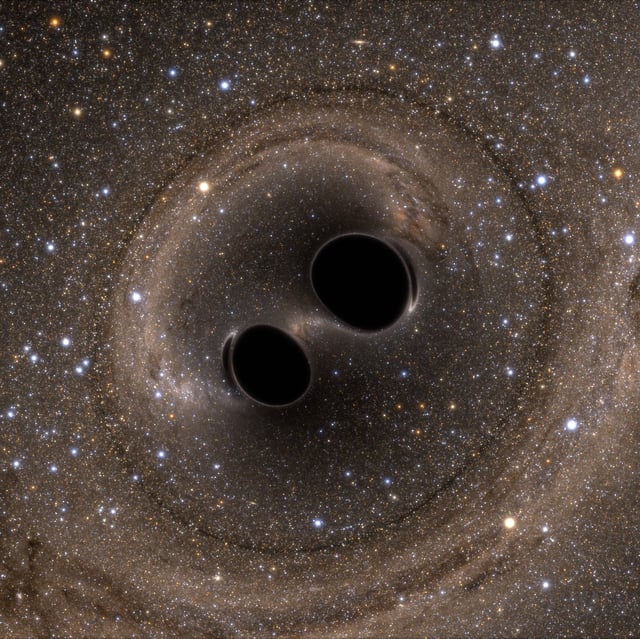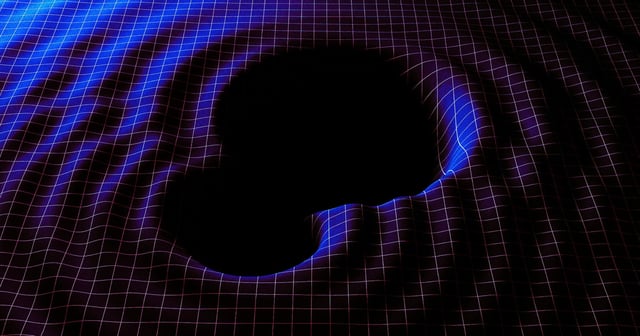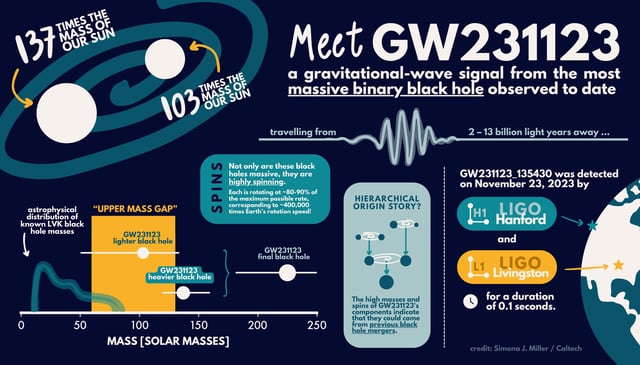Overview
- The November 23, 2023 GW231123 signal produced a single black hole of about 225 solar masses from progenitors of roughly 100 M⊙ and 140 M⊙
- At least one component lies within the 60–130 M⊙ mass gap, challenging theories that such black holes cannot form directly from stellar collapse
- Both progenitors spin near relativistic limits, yielding only the final 0.1 second ringdown phase and pushing current waveform models to their limits
- Hierarchical mergers in dense star clusters or active galactic nuclei disks are now the leading explanations for the event’s extreme mass and spin
- Results are being presented today at the GR24 and Edoardo Amaldi conferences in Glasgow and the calibrated GW231123 data will soon be released via the Gravitational Wave Open Science Center


